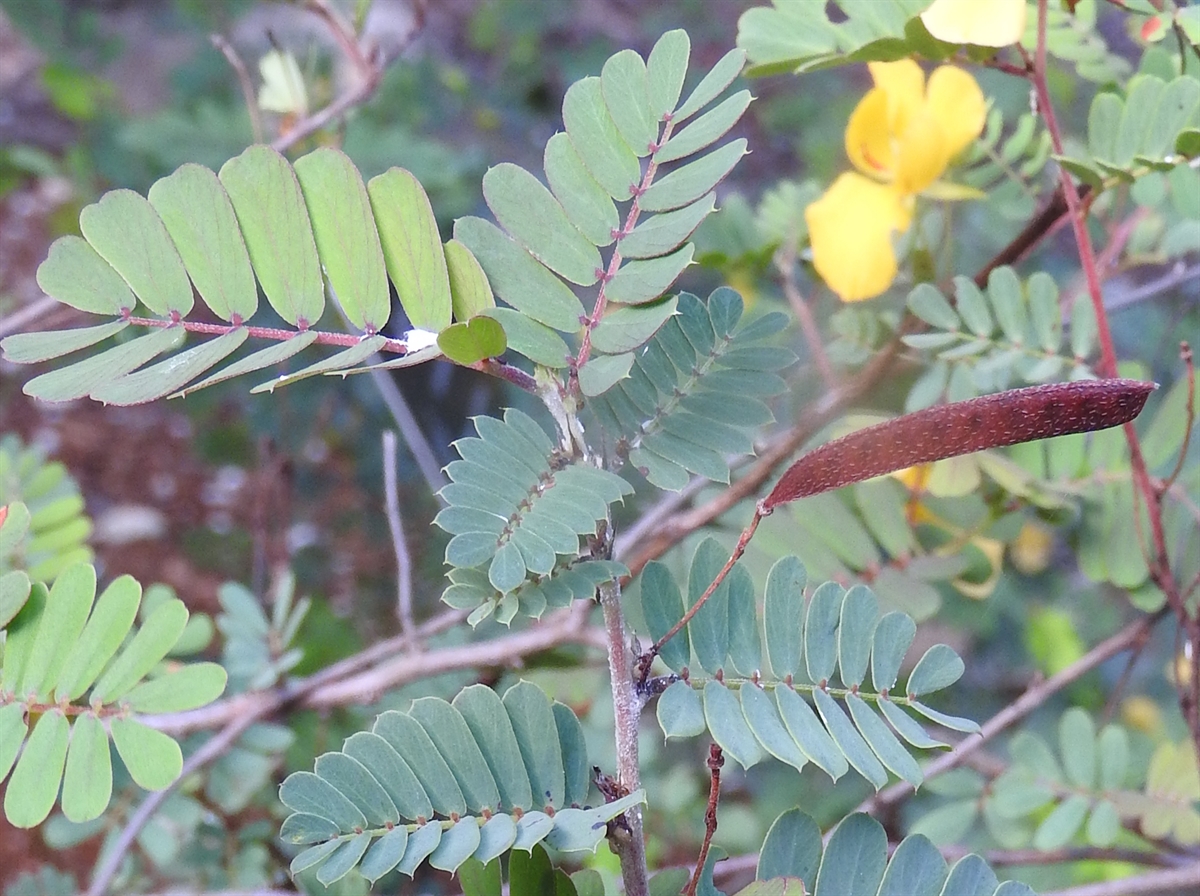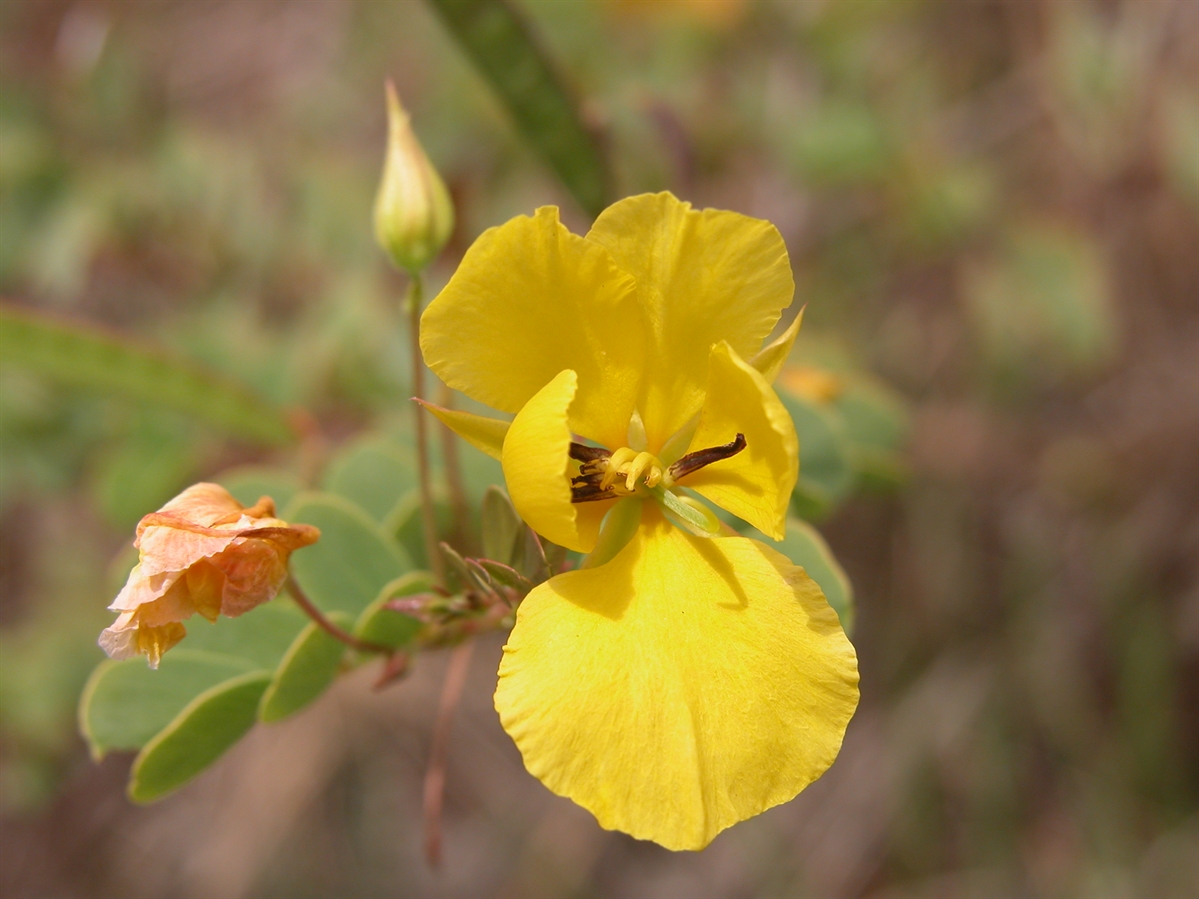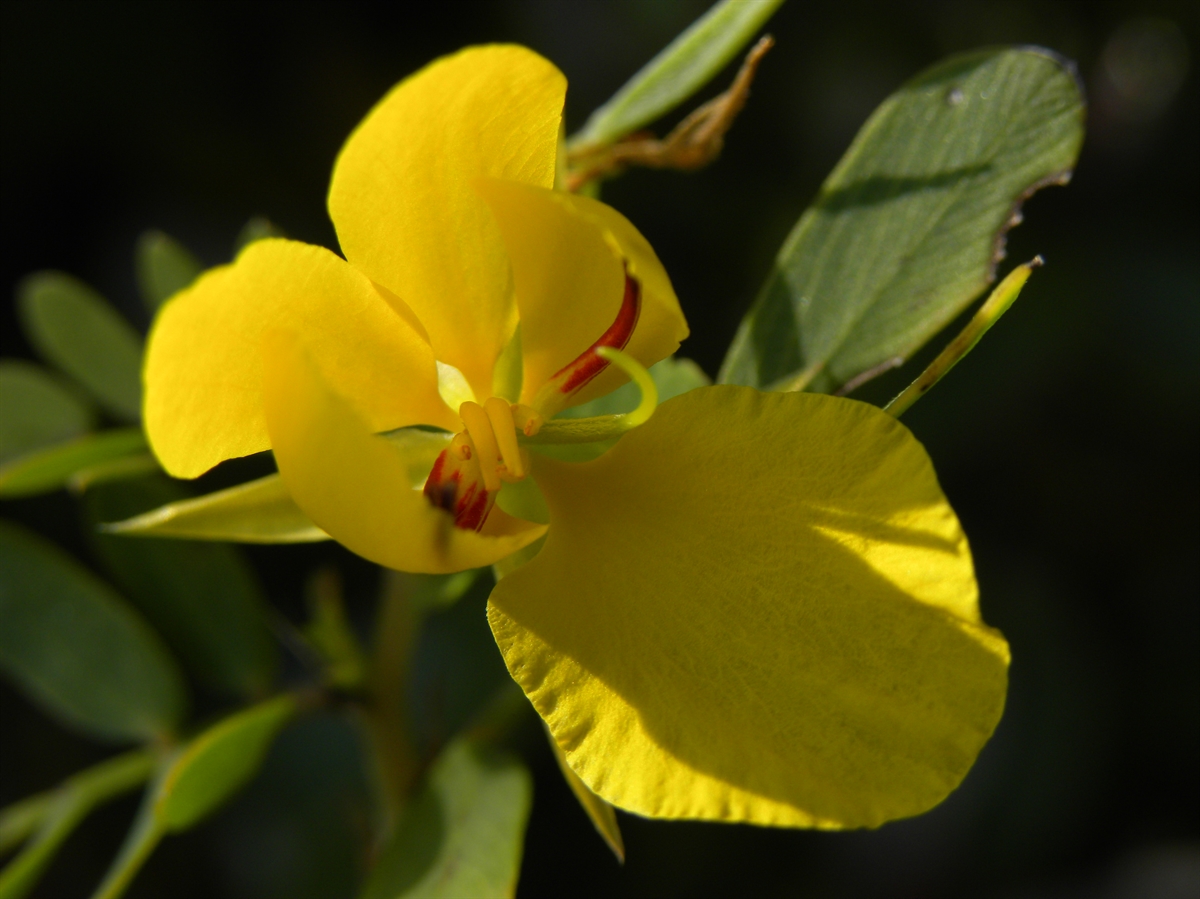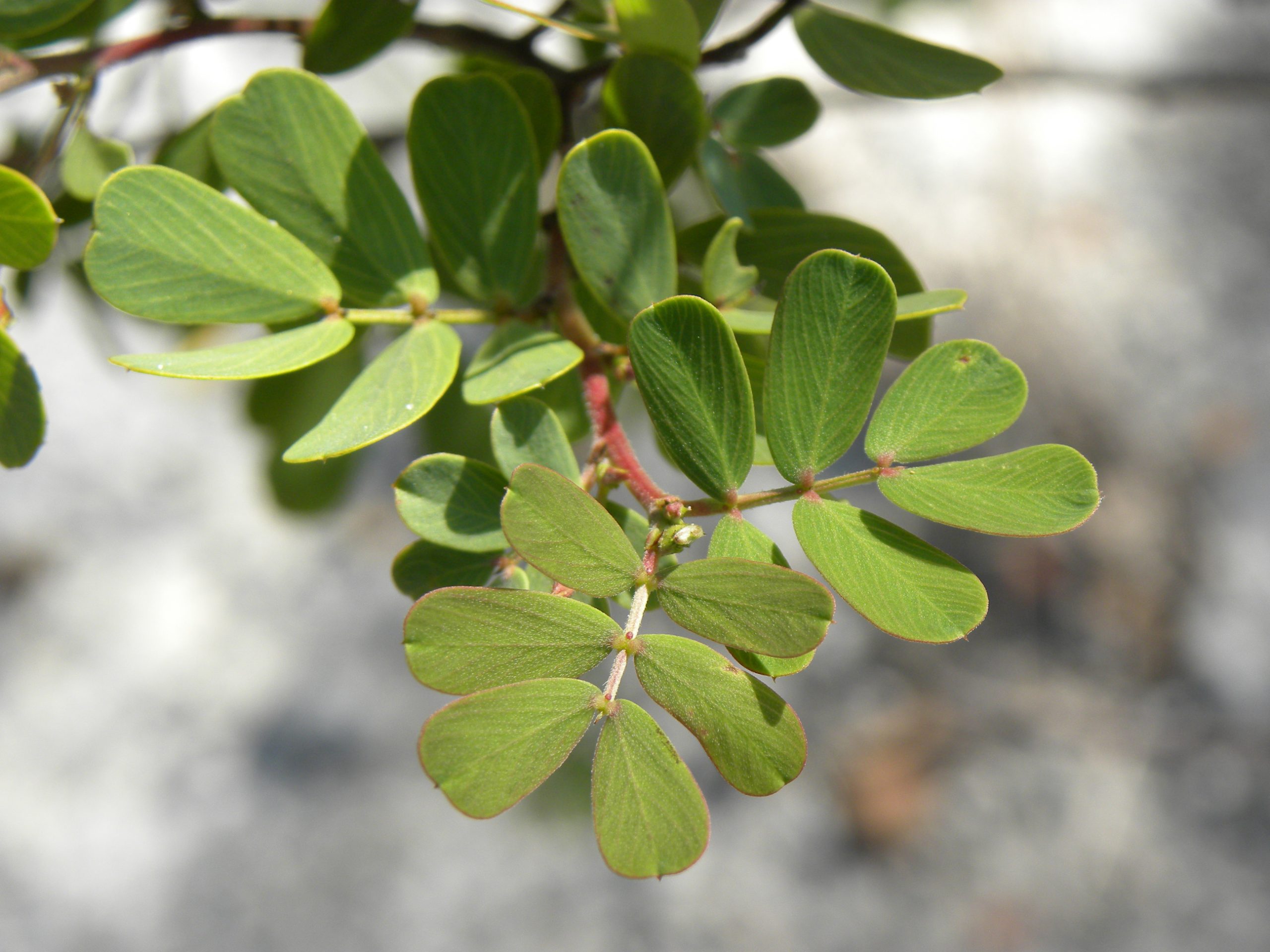Habit: Chamaecrista lineata grows as a shrub to 2 meters in height. The bipinnately compound leaves are alternately arranged. The petioles have a distinct gland between the lower pinnae or on the petiole that is round and depressed in the center is distinct to C. lineata. The sessile leaflets are in 3-6 pairs, gray green, ovate-obovate-elliptic-oblong, acute to mucronate at the leaf apex, with an entire margin. There are stipules at the petiole base that are lanceolate.
The complete, perfect, zygomorphic flowers are arranged in axillary in groups of 1-5. The calyx has 5 greenish, unfused, sepals. The corolla has 5 yellow, unfused petals, none of which form a keel or banner. There are 9 or 10 stamens of which only 7 are fertile. The ovary is superior and forms an elastically dehiscent legume at maturity.
Habitat: Chamaecrista lineata grows on unconsolidated Holocene sand substrate areas near coastlines including Dunes and Dry Broadleaf Evergreen Formation – Shrublands (scrublands).
Distribution: Chamaecrista lineata occurs on all island groupings within the Lucayan Archipelago as well as the Greater Antilles.
Medicinal/Cultural/Economic usage: Chamaecrista lineata is not known to be used medicinally in the Lucayan Archipelago.



